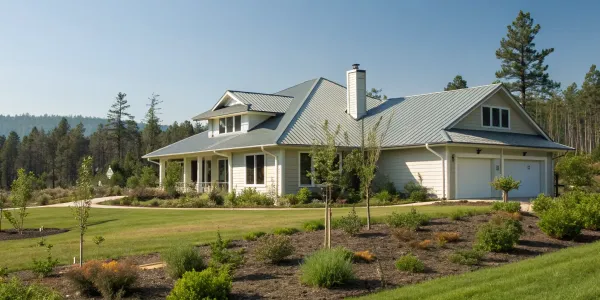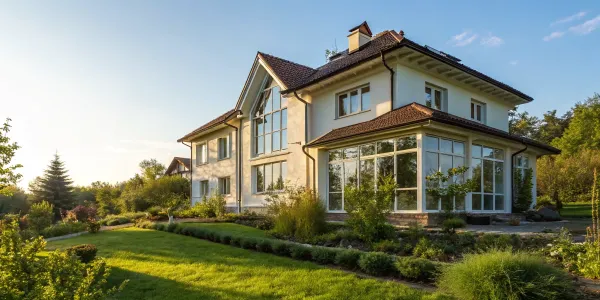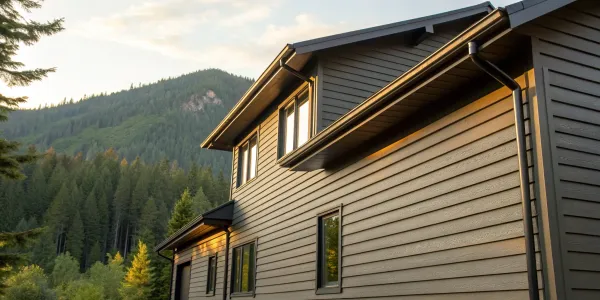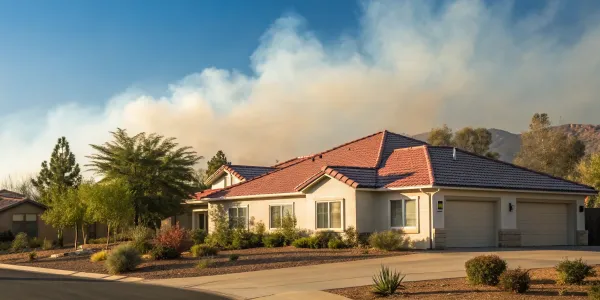Fire-Resistant House Plans: The Ultimate Guide
Get expert tips on fire resistant house plans, including materials, design features, and safety systems to help protect your home and family from wildfires.
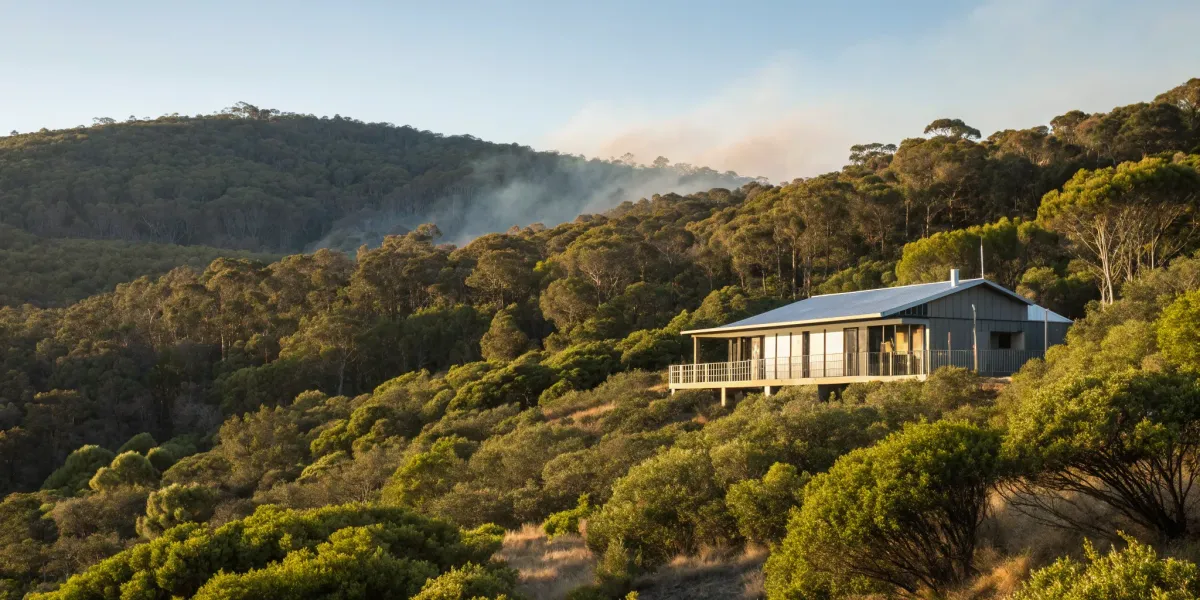
A truly fire-resistant home is a complete system, where every component works together to create layers of protection. It starts with the structure itself but extends all the way to the edge of your property line. Simply choosing fire-rated siding isn’t enough if embers can get into your vents or if flammable landscaping is right next to your foundation. A holistic approach is essential. We’ll explore how to integrate non-combustible materials, smart design features, and a well-maintained defensible space. Understanding how these elements connect is the key to developing effective fire resistant house plans that provide comprehensive, reliable protection for your family.
WiserBuild CTA Button
Key Takeaways
- Prioritize a Resilient Exterior Shell: Your home's first defense is its structure. Focus on non-combustible materials for your roof, siding, windows, and doors to create a strong barrier that can resist embers and flames.
- Create a Defensible Space as Your Buffer Zone: A fire-resistant home is still vulnerable without a protected yard. Manage the area around your house by removing flammable materials and using fire-wise landscaping to stop a fire before it reaches your walls.
- Integrate Active Systems and Document Everything: Go beyond passive protection with fire sprinklers and interconnected alarms. Keep detailed records of your materials and inspections to simplify the insurance process and prove your home meets safety standards.
What Makes a House Plan Fire-Resistant?
When you’re building a home in a high-risk area, thinking about fire resistance from the very beginning is one of the smartest moves you can make. A fire-resistant house plan isn’t about creating an indestructible fortress; it’s about making strategic choices that dramatically increase your home's chances of surviving a wildfire. This involves a thoughtful combination of design principles, material selection, and a clear understanding of local building codes and insurance requirements.
The goal is to create a home that can stand up to both direct flames and the airborne embers that are often the primary cause of ignition. Every decision, from the shape of your roof to the type of vents you install, plays a role in your home's overall resilience. By focusing on fire resistance during the design phase, you’re not just building a house—you’re investing in peace of mind and long-term security for your family. It’s about being proactive, informed, and prepared, ensuring your home is as safe as it can be.
Core Design Principles
The foundation of a fire-resistant home lies in its core structure. Your focus should be on the key components that form the building's first line of defense: the foundation, exterior walls, roof, windows, and doors. The materials you choose for these elements are critical. For example, using Insulated Concrete Forms (ICFs) for your foundation and exterior walls can provide hours of fire protection, far surpassing traditional wood framing.
For exterior finishes, materials like brick, stone, or stucco are excellent non-combustible choices. Pairing them with a metal roof creates a durable, fire-resistant shell. The overall design should also minimize areas where embers can collect, such as complex rooflines or open eaves. A simpler, more streamlined design is often a safer one.
Know Your Building Codes
Building codes aren't just red tape; they are essential safety standards developed to protect your property and your life. In wildfire-prone regions, these codes are especially stringent, often requiring homes to be resistant to both flames and embers. Local and state governments establish these rules to create a baseline for safe construction, and understanding them is non-negotiable.
The International Building Code (IBC) classifies buildings based on their fire-resistance capabilities, and your plans must meet these standards. While it might seem like meeting these codes will drive up costs, research shows that building a wildfire-resistant home doesn't have to break the bank. The key is to incorporate these requirements into your plan from the start, rather than trying to retrofit them later.
How Your Plans Affect Insurance
Your building plans have a direct impact on your ability to get insurance and how much you’ll pay for it. Insurers are in the business of managing risk, so a home designed with fire resistance in mind is a much more attractive prospect. Many insurance companies offer significant discounts for homes built with fire-resistant materials and features. By submitting a plan that clearly outlines these protective measures, you’re demonstrating that you’ve taken steps to reduce risk.
Programs like FORTIFIED Home certification provide a clear set of standards that are recognized by the insurance industry. While achieving this certification may add a small percentage to your initial construction costs, it can lead to substantial long-term savings on your premiums and give you access to better coverage options.
Balance Cost with Long-Term Value
It’s easy to focus on the upfront cost of fire-resistant materials, but it’s more helpful to view them as a long-term investment. Spending a bit more on stronger, non-combustible materials during construction can save you an incredible amount of money and heartache down the road. The cost of these upgrades is minor compared to the devastating expense of rebuilding after a fire.
While it's nearly impossible to make a home 100% fire-proof, every resilient choice you make improves its odds of survival. This isn't just about protecting a financial asset; it's about safeguarding your home and family. By prioritizing resilience in your budget, you’re choosing long-term security over short-term savings.
Choose the Right Materials for Fire Protection
The materials you choose are the building blocks of a safer home. From the roof over your head to the siding on your walls, every selection plays a critical role in how your house will stand up to a fire. Think of these choices not just as design decisions, but as your first line of defense. Focusing on non-combustible and fire-resistant options from the very beginning of your project is one of the most effective ways to protect your home and family. It’s about creating a structure that can resist ignition from embers and slow the spread of flames, giving you precious time when it matters most.
Select Durable Exterior Materials
Your home’s exterior is its shield against the elements, especially embers, which are a primary cause of home ignition during a wildfire. That’s why selecting durable, non-combustible materials is so important. Options like fiber-cement, brick, stucco, and stone are excellent choices because they don’t burn and can withstand intense heat. When you’re designing a home to withstand fire, it’s just as crucial to know what to avoid. Vinyl siding, for example, can melt when exposed to high temperatures, creating openings that allow embers to get inside the walls and ignite the structure from within.
Compare Roofing and Siding Options
The roof is one of the most vulnerable parts of your home during a wildfire, so choosing the right material is non-negotiable. Metal roofs are a fantastic option; they are extremely fire-resistant and durable, often lasting 40 years or more. Tile is another great fire-resistant choice, but it’s much heavier and may require extra structural support, which can add to your costs. On the other hand, traditional asphalt shingles don’t hold up well against fire and should generally be avoided in high-risk areas. Taking the time to build a fire-resistant house means carefully weighing these options to find the best fit for your design, budget, and safety needs.
Install Fire-Rated Windows and Doors
Windows and doors are potential weak points where heat and embers can enter your home. To secure these openings, you’ll want to install double-glazed windows at a minimum, as the two panes of glass offer better insulation against heat. For even greater protection and improved energy efficiency, consider upgrading to triple-glazed windows. Tempered glass is also a smart choice because it’s much stronger and more resistant to breaking under extreme heat. Don’t forget your doors—all exterior doors should be made of a fire-resistant material like metal or solid wood and carry an official fire rating to ensure they provide a solid barrier against flames.
Choose Fire-Resistant Interior Finishes
Fire protection doesn’t stop at the exterior. The materials inside your home can either help or hinder a fire’s spread. Opt for fire-rated drywall (often called Type X), which is thicker and designed to slow down flames. For flooring, non-combustible materials like tile, slate, or concrete are your safest bets. If you love the look of wood, consider treatments that can improve its fire resistance. Even your decor can make a difference. When choosing curtains, rugs, and upholstery, look for items made from naturally fire-resistant fabrics like wool or treated synthetic materials to reduce potential fuel sources inside your living space.
Incorporate Smart Design Features for Safety
Beyond choosing the right materials, the way your home is designed and assembled plays a massive role in its ability to withstand a fire. Smart design is about creating a structure that actively resists ignition and contains damage if a fire does occur. It involves thinking through every detail, from the foundation that supports your home to the vents that allow it to breathe. These features aren't just add-ons; they are fundamental components of a truly resilient house plan.
By focusing on structural integrity, sealing off common entry points for embers, and integrating reliable emergency systems, you can build layers of protection right into your home’s blueprint. These design choices are proactive steps that give you and your family peace of mind, knowing your home is built to be as safe as possible. Thoughtful planning at this stage also makes your home more attractive to insurers, as it demonstrates a clear commitment to mitigating risk. Let’s look at four key areas where smart design can make a significant impact.
Strengthen Your Foundation and Structure
A strong, fire-resistant frame is your home's first line of defense. While traditional wood framing is common, it’s also combustible. For superior fire resistance, consider building with Insulated Concrete Forms (ICFs). ICFs are essentially hollow foam blocks that are stacked and filled with reinforced concrete. This creates a solid, continuous wall system that is incredibly durable and can resist fire for hours longer than a standard wood-frame wall. Using ICFs for your foundation and exterior walls creates a formidable barrier that can significantly slow a fire’s spread, protecting your home and everything inside it.
Protect Vents from Embers
During a wildfire, the greatest threat often comes from wind-blown embers, which can travel a mile or more ahead of the actual flames. These tiny, glowing embers can easily enter your home through vents—like those in your attic, foundation, or under your eaves—and ignite flammable materials inside. To prevent this, it’s crucial to cover all vent openings with a fine metal mesh screen with openings no larger than 1/8 inch. This simple, code-compliant measure acts as a sieve, blocking embers while still allowing for necessary airflow. According to the Insurance Institute for Business & Home Safety, sealing these small entry points is one of the most effective ways to protect your home.
Integrate Emergency Systems
Active safety systems are your backup plan, providing critical protection when you need it most. A whole-house fire sprinkler system can automatically detect and suppress a fire in its earliest stages, often extinguishing it before the fire department even arrives. This can dramatically reduce property damage and, more importantly, give your family precious time to evacuate safely. Pair this with a network of interconnected smoke and carbon monoxide detectors that alert everyone in the house simultaneously. These essential emergency systems are a non-negotiable part of any fire-resistant home design, offering a vital layer of security.
Install Fire-Resistant Utilities
Your home’s utilities—like gas lines and electrical panels—can be significant fire hazards if they aren’t properly protected. A smart design accounts for this by isolating and safeguarding these systems. For example, placing your gas meter and main electrical service panel away from combustible materials and elevating them can protect them from ground fires and other hazards like flooding. You can also encase utility lines in fire-resistant materials where they enter the home. These thoughtful design considerations ensure that the very systems that power your home don’t become a point of failure during an emergency.
Create a Defensible Space Around Your Home
A fire-resistant home is only as strong as the space around it. Embers from a wildfire can travel over a mile, and if they land on flammable materials near your house, your home is at risk, no matter how well it’s built. Creating a defensible space is about strategically managing your yard to reduce fire hazards. This buffer zone gives firefighters a safer area to defend your home and can significantly slow a fire’s spread.
Think of your property in layers of defense. By clearing away flammable materials and choosing fire-wise landscaping, you create a protective bubble. This isn't about having a barren, dirt yard; it's about making smart, intentional choices with plants, mulch, decks, and outdoor furniture. A well-designed defensible space is a critical component of any fire-resistant building plan and is often required by local codes and insurance policies. It’s one of the most effective actions you can take to protect your property.
Plan Your Defense Zones
The key to an effective defensible space is to think in zones, starting from your house and moving outward. The most critical area is what the California Department of Forestry and Fire Protection (Cal Fire) calls Zone 0, or the Ember-Resistant Zone. This is the area extending five feet from your home’s foundation. Your goal here is to eliminate anything that could ignite from embers. This means removing flammable materials like bark mulch, dead plants, and woodpiles. Instead, use noncombustible options like gravel, pavers, or concrete. This zone is your home’s last line of defense, and keeping it clean is non-negotiable.
Use Fire-Resistant Landscaping
Your landscaping choices play a huge role in your home’s safety. While no plant is truly "fireproof," many species are considered fire-resistant because they have high moisture content and don't accumulate dead, flammable material. When planning your garden, choose high-moisture plants like succulents and native perennials that are less likely to ignite. It’s just as important to remove flammable vegetation, especially within the first five feet of your home. Proper maintenance, like pruning trees to keep branches at least 10 feet from your roof and clearing away dead leaves and pine needles, is essential for creating a defensible space.
Add Strategic Hardscaping
Hardscaping refers to the non-living elements of your landscape, like patios, walkways, and retaining walls. These features can act as excellent fuel breaks, stopping a ground fire from reaching your home. Use noncombustible materials like gravel, brick, or concrete for paths and patios to create fire-free zones. When it comes to decks and fences, material choice is critical. Avoid attaching a flammable wooden fence directly to your house. For decking, it's best to use noncombustible decking materials or metal mesh. If you opt for a plastic composite, make sure it’s paired with a steel support system to prevent collapse during a fire.
Commit to Regular Maintenance
Creating a defensible space is not a one-and-done project; it requires ongoing commitment. Regular maintenance ensures your property stays fire-resistant season after season. You should consistently inspect and maintain your landscaping and hardscaping. This includes cleaning leaves and debris from your roof and gutters, mowing dry grass, and removing dead branches from trees and shrubs. Make it a habit to walk your property and look for new vulnerabilities. A simple seasonal checklist can help you stay on top of these tasks and ensure your defensible space remains effective when you need it most.
Integrate Fire Safety Systems
Beyond the fire-resistant materials that make up your home’s structure, active safety systems provide your first line of defense. These systems are designed to detect a fire early, control its spread, and give your family precious time to get out safely. Integrating them into your initial house plans is far more effective and affordable than trying to retrofit them later. Think of it as building a complete safety net—the strong walls and roof are your passive protection, while detectors and sprinklers are your active guardians.
Many modern building codes require these systems, and insurance companies often provide significant discounts for homes equipped with them. By planning for fire safety systems from the start, you’re not just adding features; you’re building a smarter, more resilient home that protects what matters most. From early warning alerts to automated fire suppression, these systems work together to create a comprehensive safety strategy that gives you peace of mind.
Install Detection and Alert Systems
The simplest and most critical safety feature in any home is a reliable detection system. Your plans should include strategically placed smoke and carbon monoxide detectors on every level of the house, inside each bedroom, and outside sleeping areas. For the best protection, specify interconnected alarms—when one sounds, they all sound. This ensures everyone is alerted, no matter where the fire starts. Modern smart detectors can even send an alert to your phone, which is invaluable if a fire breaks out while you’re away. Following proper fire prevention and maintenance practices, like testing alarms monthly and changing batteries, is just as important as the initial installation.
Design an Effective Sprinkler System
Residential fire sprinklers are one of the most effective ways to control a fire and save lives. Contrary to what you see in movies, only the sprinkler head closest to the fire activates, spraying water directly onto the flames to suppress them before they can grow. This can contain or even extinguish a fire long before the fire department arrives, dramatically reducing property damage and health risks. Including a whole-house sprinkler system in your building plans is a powerful investment in your family’s safety. It’s a feature that insurers value highly, and it works 24/7 to protect your home.
Plan for Emergency Power
Wildfires and other emergencies often cause power outages, which can disable the very systems you rely on for safety. Your smoke detectors, security systems, and water pumps for sprinklers may all depend on electricity to function. That’s why your house plans should include a strategy for emergency power. Consider installing backup power systems like a whole-house generator or a battery backup system. This ensures that your critical safety infrastructure remains operational when you need it most, keeping your lights on, your alarms active, and your communication lines open during a crisis.
Create an Evacuation Plan
A fire-resistant home gives you more time to escape, but you still need a clear and practiced plan to get out safely. This plan is a critical part of your home’s overall safety design, even though it doesn’t appear on the blueprints. Map out at least two escape routes from every room and establish a safe meeting spot outside, a good distance from the house. It’s essential to practice fire escape plans with your family at least twice a year so everyone knows exactly what to do. Make sure windows are easy to open and that escape routes are always kept clear of furniture and other obstructions.
Meet Insurance and Compliance Requirements
Building a fire-resistant home is about more than just choosing the right materials and design; it’s also about proving that you’ve met the necessary standards. Insurance and compliance can feel like the final hurdles in a long race, but addressing them from the start makes the entire process smoother. Think of it this way: your building plans are the script, and the documentation, inspections, and insurance policies are the official records that show you followed it perfectly.
Getting these elements right gives you peace of mind and protects your investment. Insurers are more willing to offer better coverage and rates for homes that are verifiably resilient. Likewise, meeting or exceeding local building codes ensures your home is legally sound and built to withstand regional threats. By treating compliance and insurance as integral parts of your project, you can avoid last-minute surprises and build a home that is safe, insurable, and ready for the future.
Prepare the Right Documentation
Keeping meticulous records is one of the most important things you can do during your build. When it comes to fire safety, you are your home’s first and best advocate. Having organized documentation shows insurers and officials that you’ve taken every step to protect your property. Create a dedicated binder or digital folder for your architectural plans, material specifications, permits, and all inspection reports. This portfolio serves as concrete proof of your home’s fire-resistant features. A homeowner's guide to fire-resistant construction can be a great resource for understanding what to prioritize and document throughout the process.
Find Opportunities to Lower Your Premium
Investing in fire-resistant construction often comes with a financial benefit: lower insurance premiums. While using resilient materials and certified building methods may add to your initial construction costs, insurers often recognize these efforts with more favorable rates. For example, achieving a designation like FORTIFIED Home™ certification can make your property more attractive to carriers. Talk to your insurance agent early in the planning process to see what discounts or programs are available. Understanding these must-have features for fire resistance can help you make smart investments that pay off for years to come.
Review Your Coverage Options
Don’t wait until your home is built to figure out your insurance coverage. Your policy needs to align with the realities of living in a high-risk area. Modern wildfire-resistant construction standards often require homes to be both flame- and ember-resistant, and your insurance should reflect these advanced measures. Schedule a meeting with your agent to review your building plans and discuss how your material choices and design features will impact your coverage. Ensure your policy provides adequate replacement cost value and covers the specific risks associated with your location. This proactive conversation helps you secure the right protection from day one.
Schedule Professional Inspections
Professional inspections are essential for verifying that your home was built according to fire-resistant plans and codes. Inspectors provide an impartial assessment of your home’s construction, focusing on critical areas that contribute to fire safety. According to building code fireproofing requirements, these inspections often examine structural elements like beams and columns, as well as wall and floor assemblies. These official reports are invaluable for your own records and are often required by insurance companies to prove compliance. Scheduling these inspections at key stages of construction ensures every detail is correctly implemented and documented.
Start Planning Your Fire-Resistant Home
With a solid understanding of fire-resistant design principles, materials, and safety systems, you’re ready to move from concept to construction. Bringing your vision to life requires a clear, step-by-step approach. This involves setting a practical budget, choosing your materials wisely, assembling the right team, and creating a plan for long-term care. Taking the time to plan these details now will ensure a smoother building process and a safer home for years to come.
Set a Realistic Budget
One of the most persistent common myths about building a fire-resistant home is that it’s financially out of reach for the average person. While some high-performance materials come with a higher upfront cost, a resilient home doesn't have to break the bank. The key is to focus on long-term value. Investing in durable, non-combustible materials can lead to significant savings on insurance premiums and future repair costs. Work with your builder to identify cost-effective solutions that prioritize safety where it matters most, ensuring your budget aligns with both your financial goals and your peace of mind.
Define Your Material Selection Process
Your choice of materials is the foundation of your home's resilience. Before you get overwhelmed by options, create a clear process for making selections. To design and build a fire-resistant house, you should prioritize the most vulnerable components: the roof, exterior walls, windows, and doors. For example, using Insulated Concrete Forms (ICFs) for your foundation and exterior walls provides a structure that can withstand fire for hours longer than traditional wood framing. By methodically choosing non-combustible or fire-rated materials for each part of your home's exterior shell, you create a powerful first line of defense against embers and flames.
Work with the Right Professionals
You don’t have to be an expert in fire science to build a safe home—that’s what your team is for. Assembling a group of architects, engineers, and contractors who are experienced in resilient construction is one of the most important steps you can take. These professionals understand local wildfire-resistant building codes and can guide you toward compliant, effective solutions. They can also help you balance costs and benefits, ensuring your investment is directed toward features that provide the greatest protection. An experienced team turns complex regulations and building challenges into a clear, manageable process.
Plan for Future Maintenance and Updates
A fire-resistant home is a long-term commitment, and its effectiveness depends on consistent upkeep. Your planning shouldn't stop once construction is complete. Create a simple, proactive maintenance schedule from day one. This plan should include clearing debris from your roof and gutters, managing vegetation in your defensible space, and testing your fire safety systems. You should also regularly inspect and maintain vents, windows, and siding to ensure they remain sealed and in good condition. Thinking about maintenance now makes it easier to protect your investment and keep your family safe for the long haul.
Related Articles
- WiserBuild - Wildfire Resilient Homes & Building Code Compliance
- WiserBuild - Wildfire Resilient Homes & Building Code Compliance
- WiserBuild | Smarter, Safer, Code-Compliant Homes
- WiserBuild - Wildfire Resilient Homes & Building Code Compliance
WiserBuild CTA Button
Frequently Asked Questions
Is it actually possible to build a completely fire-proof house? The goal isn't to build an indestructible fortress, but a highly fire-resistant one. No home is 100% fire-proof, but by using non-combustible materials, smart design, and creating a defensible space, you can dramatically improve its chances of surviving a wildfire. It's about giving your home the ability to withstand embers and slow down flames, which provides critical protection for your family and your investment.
How much more does it cost to build a fire-resistant home? While some fire-resistant materials have a higher upfront cost, the overall expense doesn't have to be dramatically more than a standard build. The key is to integrate these choices into your plan from the very beginning. Investing in features like a metal roof or concrete walls can also lead to long-term savings through lower insurance premiums and reduced maintenance, making it a smart financial decision over the life of your home.
If I have a limited budget, what's the most important area to focus on? Your home's exterior shell is your first and most important line of defense. If you have to prioritize, focus your budget on the roof and exterior walls. A non-combustible roof, like metal or tile, and siding made of materials like stucco or fiber-cement can prevent embers from igniting your home. Protecting these large, vulnerable surfaces provides the most significant impact on your home's safety.
Does the work I do in my yard really make a difference? Absolutely. Creating a defensible space is just as critical as the construction of your house. Most homes ignite from embers landing on flammable materials nearby, like dry mulch, dead leaves, or woodpiles. By clearing a five-foot non-combustible zone around your foundation and using fire-wise landscaping further out, you create a buffer that can stop a fire from ever reaching your home.
How can I be sure my architect or builder understands fire-resistant construction? When interviewing professionals, ask them directly about their experience building in high-risk areas. Request to see examples of past projects and ask them to explain the specific fire-resistant materials and design techniques they used. A knowledgeable professional will be able to discuss local building codes, insurance requirements, and the long-term value of resilient design with confidence.

